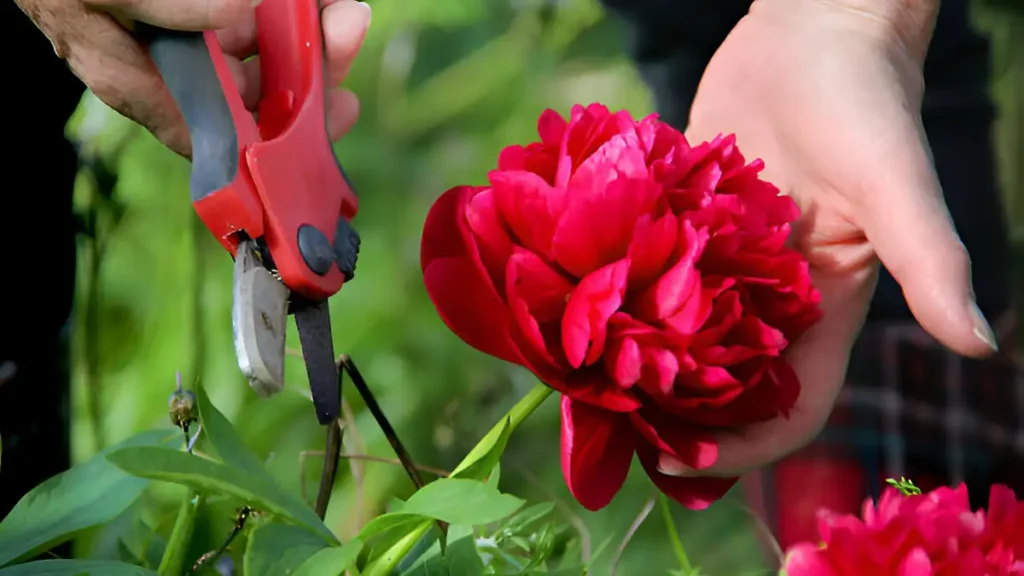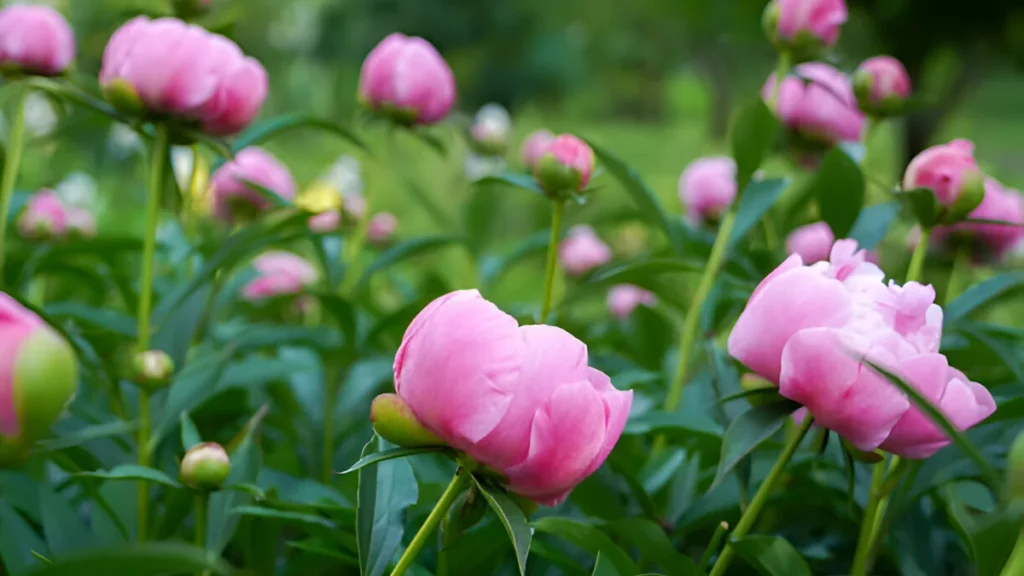Peonies add vivid beauty and an abundance of greens to any garden, making it a worthwhile undertaking. The big, fragrant blossoms of these perennial plants, which range in shades of pink, red, white, and yellow, are what make them so popular. Among the most beautiful flowers in the garden, peony blossoms are dense and weighty, and they are native to both Eurasia and North America. This guide is meant to offer professional advice on how to cultivate and care for these lovely flowers so that they flourish and brighten any garden.
Specific rules for planting peonies:
- Using well-drained soil and a sunny location, dig a large hole that is about two feet deep and two feet wide. Add more compost to the soil if it is heavy or very sandy. Never plant too deeply.
- Always be sure that each plant has adequate room for air circulation to ward against fungal diseases.
- Every single day, peonies need at least 6 to 8 hours of sunshine.
- Peonies favor neutral soil that is slightly acidic. To improve the soil, work in compost or well-rotted manure. Raised beds or the addition of sand and organic matter can help with drainage if the soil is entirely clay.

Explaining how to plant peonies:
- Peonies develop finest in the fall, from late September to early November.
- Plant the roots of herbaceous and intersectional peonies 1-2 inches below the soil’s surface, matching the eyes.
- Plants should be spaced three to four feet apart to promote growth and airflow.
Overall peony care:
- In autumn, cut the plant to the ground to prevent infections from overwintering. Avoid covering peonies in mulch. Use a balanced, slow-releasing fertilizer to side-dress plants when peony leaves start to wither.
- Avoid covering peonies in mulch. For the first winter following planting, in areas with extreme cold, mulch very lightly with pine needles or crushed bark. In the spring, remove the mulch.
- Once established, give newly planted peonies regular watering. Peonies may withstand some drought after they are established, but they still require frequent watering, particularly in dry seasons.
- In early spring, when new vegetation first emerges, apply a balanced fertilizer. Avoid using high-nitrogen fertilizers, as these can promote leaf growth over blooms.
- After the first frost, trim herbaceous peonies’ foliage to the ground. Remove any damaged or dead wood from tree peony in late winter or early spring.

Typical issues and their fixes:
- Although peonies are normally pest-free, keep an eye out for ants on the buds as they are harmless and aid in bloom opening.
- Ensure adequate air circulation, refrain from watering overhead, and remove any impacted plant sections to prevent fungal diseases like botrytis blight.
Additional tips:
- Many plants that you can grow in your garden that are resistant to depeonies may take two to three years to establish themselves and begin to bloom heavily. Use peony cages or rings for heavy flowers.
- Plant away from trees and shrubs with strong root systems.
Conclusion:
Peonies are a beautiful, versatile flower that have a lot of meaning in gardens, floral arrangements, and cultural traditions. In addition to being visually beautiful, peonies require little maintenance and can thrive in a range of climates given the correct circumstances. The professional advice provided in this article will help you make sure your peonies flourish and produce beautiful blooms every year.
Certainly! If you’d like to learn more, please consider following our WhatsApp Channel: Harvest Gardening
A frequently asked questions:
Q1. How to grow peonies in a pot?
A1. Sure, Select a pot that is at least 12 inches deep and 18 inches in diameter. To avoid waterlogging, drainage holes should be present. Use an organic-rich, well-draining potting mix.
Q2. Are peonies poisonous to cats?
A2. Undoubtedly, peonies are regarded as toxic to animals. They include phenol, a substance that, if consumed, can be mild to moderately hazardous. It is crucial to get advice and potential treatment from a veterinarian as soon as you believe that an animal has consumed this.
Q3. Is it possible to grow peonies indoors from seeds?
A3. Yes, you can start peony seeds indoors in pots or trays filled with well-drained potting soil. As soon as the seeds begin to sprout, move the containers to a sunny spot and make sure the soil is never dry. After the seedlings have produced a few genuine leaves, transplant them outside.
Q4. When do peonies bloom?
A4. Peonies generally bloom from late May to early June, though this might vary depending on the region and type. usually, peonies bloom in late spring to early summer.




1 Comment
Pingback: Discover April Flower Magic: Spring's Vibrant Beauty!